Leemans pumping station, Wieringermeer
The reclamation of the Wieringermeer in the years 1927-1930 was the first major project of the Zuiderzee Works and the whole world would know it. Main pumping station Lely stood out - and stands out - more, but over ninety years later, pumping station Leemans has become the most important pumping station of the Wieringermeer.
When the Zuiderzee Works began in 1927, many Dutch people felt that with such an important work, a beautiful decoration was also important. The technically necessary feats of hydraulic engineering had to be provided with appropriate and dignified architecture. It was therefore important that the two pumping stations of the Wieringermeer should stand out in the landscape, as an expression of the "fundamental importance which drainage has for the existence of the polder", as one hydraulic engineer put it.
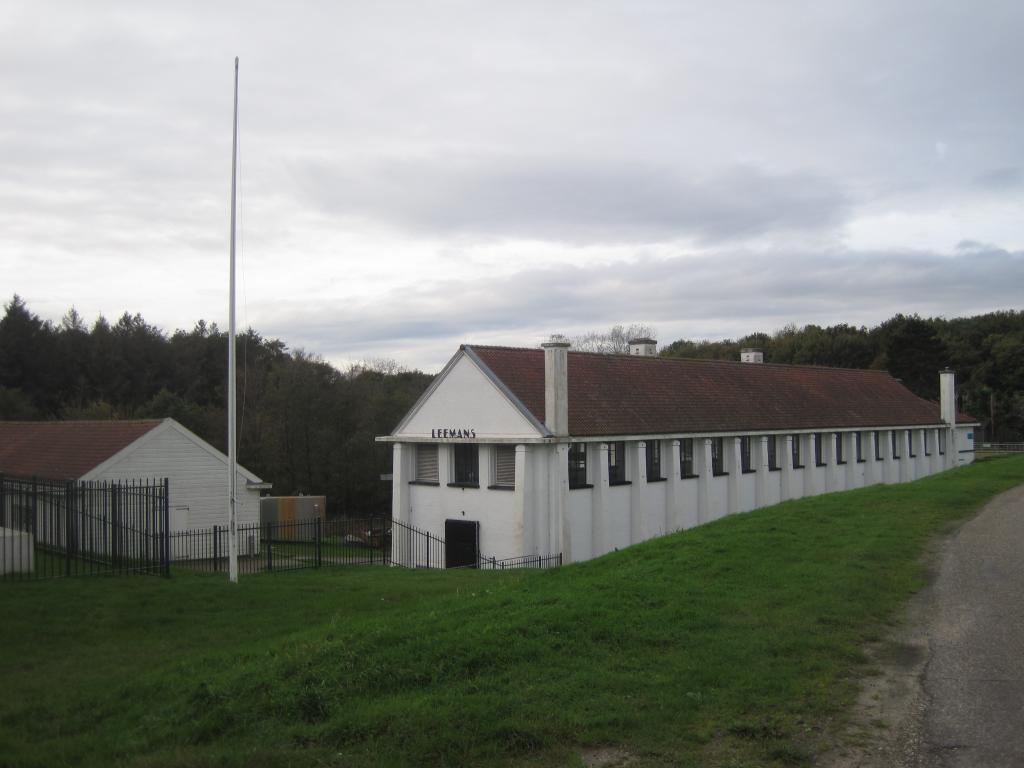
The design of the Lely and Leemans pumping stations was entrusted to Dirk Roosenburg (1887-1962), an influential architect who designed buildings for companies such as Philips, Stork and KLM and for the Rijksoverheid. Many of the buildings he built are national monuments. From the 1920s he was also aesthetic consultant to the Department of Public Works and the Zuiderzee Works, i.e. he made sure that the necessary technical works were not only useful but also looked beautiful.

Roosenburg was asked to design the drainage sluices in the Afsluitdijk and the pumping stations of the Wieringermeer in 1927. Both Lely and Leemans were built of white painted reinforced concrete and in a sleek and angular architecture. The design of the pumping stations was in keeping with the industrial architecture of the time according to the idea of "New Objectivity" or functional building, where form was considered to follow function. Main pumping station Lely was also given a large transformer station on the second floor and rises above the polder; Leemans was only a pumping station and, as an elongated building, it conformed, as it were, to the dike next to it. The length was also emphasized with the faintly sloping gabled roof covered with red tiles.
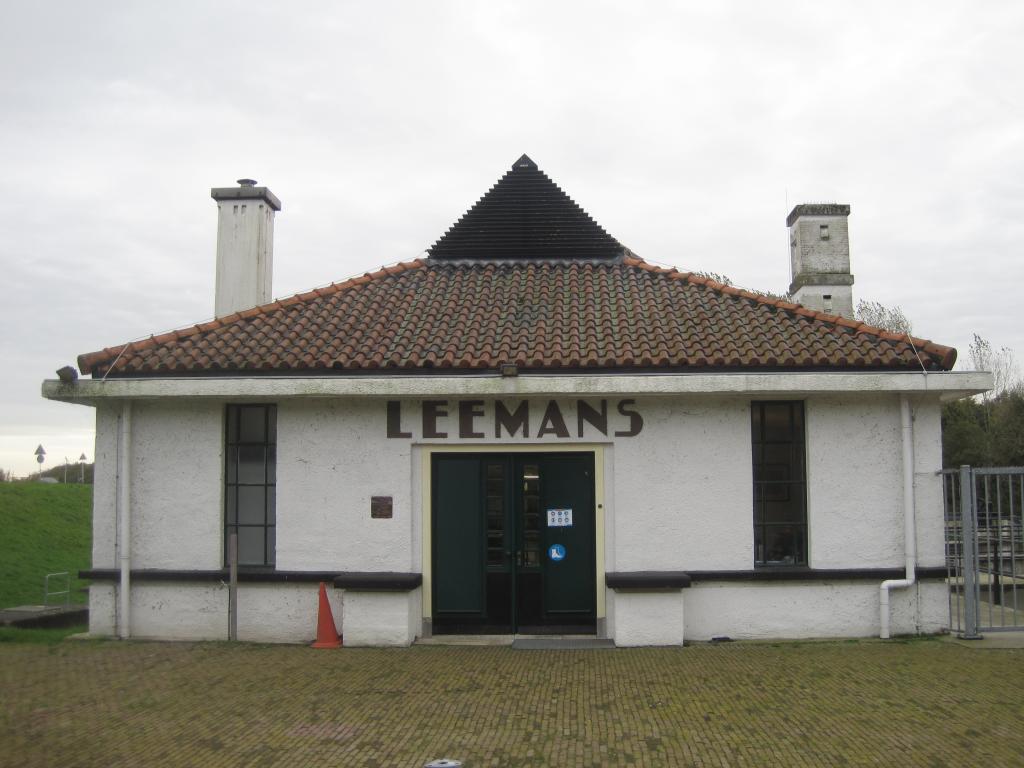
The pumping station was built in a bowl: only the entrance, windows and roof rose above the water table. Where Lely ran on electricity, Leemans was deliberately equipped with two diesel engines, so that if the electricity failed or there was a shortage of diesel, the pumping station could continue to operate. Three diesel tanks were erected next to the pumping station so that in case of an emergency one could get by. The diesel engines were supplied by the famous Amsterdam machine factory Werkspoor and each drove a centrifugal pump.

The pumping station was named after engineer Wilhelmus François Leemans (1841-1929), former chief inspector general or official head of the Department of Public Works between 1903 and 1906. He had been involved in plans to reclaim parts of the Zuiderzee since 1870 and became president of the Zuiderzee Association in 1901. This existed from 1886 to 1949 and had set itself the task of starting a national movement for impoldering the Zuiderzee - successfully. After the passage of the Zuiderzee Act in 1918, Leemans was appointed a member of the Zuiderzee Council, a government advisory committee that existed until 1969.
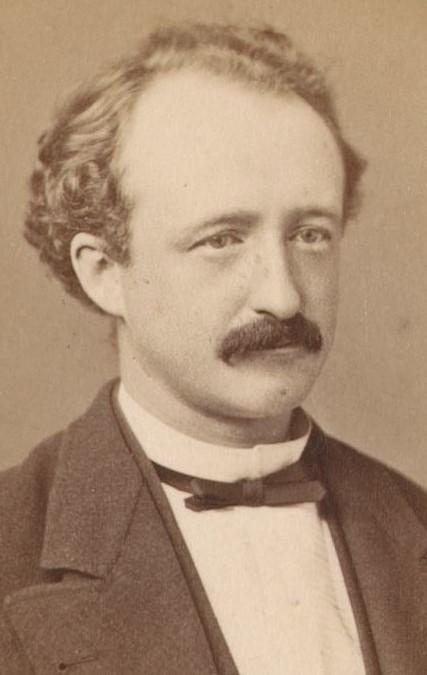
Leemans and Lely were commissioned simultaneously on February 10, 1930, and began the reclamation of the Wieringermeer. Each pump could discharge 250 cubic meters of water per minute. Space had been saved for a third pump, but it never came. Two main supply waterways of the Wieringermeer ended at Leemans. Together, Lely and Leemans could discharge 1,700 cubic meters of water per minute. The pumping stations pumped the polder empty in six months. On August 21, 1930, the new polder was dry.
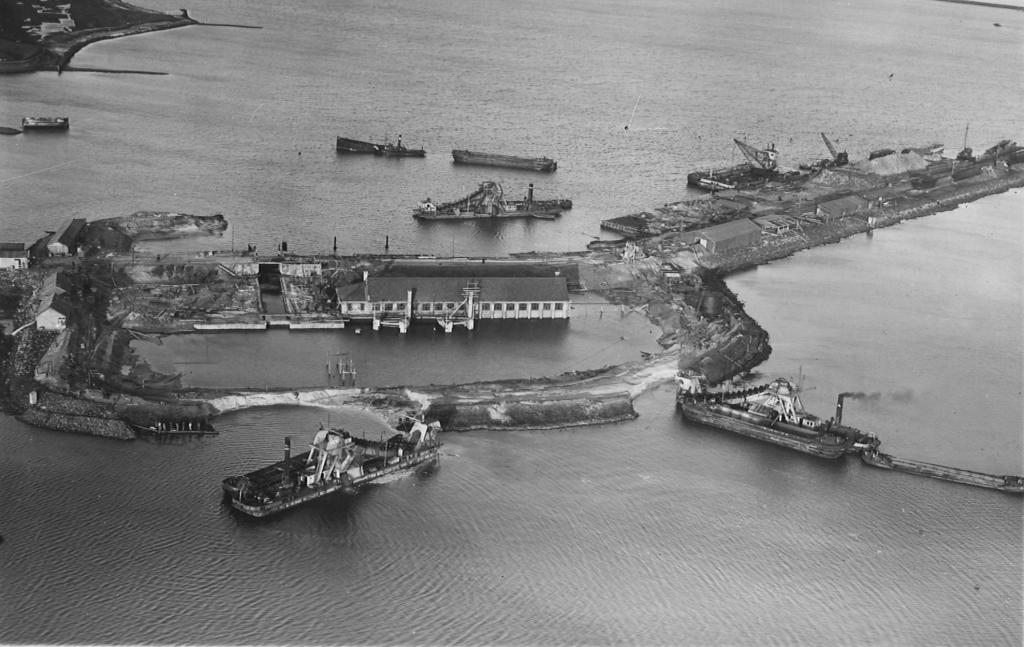
Leemans and Lely drained the Wieringermeer not once but twice. On April 17, 1945, the German occupying army blew up the Wieringermeer dike to prevent Allied air landings in the polder. The more than 7,000 residents and about 1,000 people in hiding had to flee headlong. After the liberation, work began quickly to repair the dike, which was closed on Aug. 5. Between August 9 and December 11, Leemans and Lely, together with some quickly installed emergency pumping stations, milled the polder dry again. Fortunately it was fresh water, so there was another good harvest a year later.
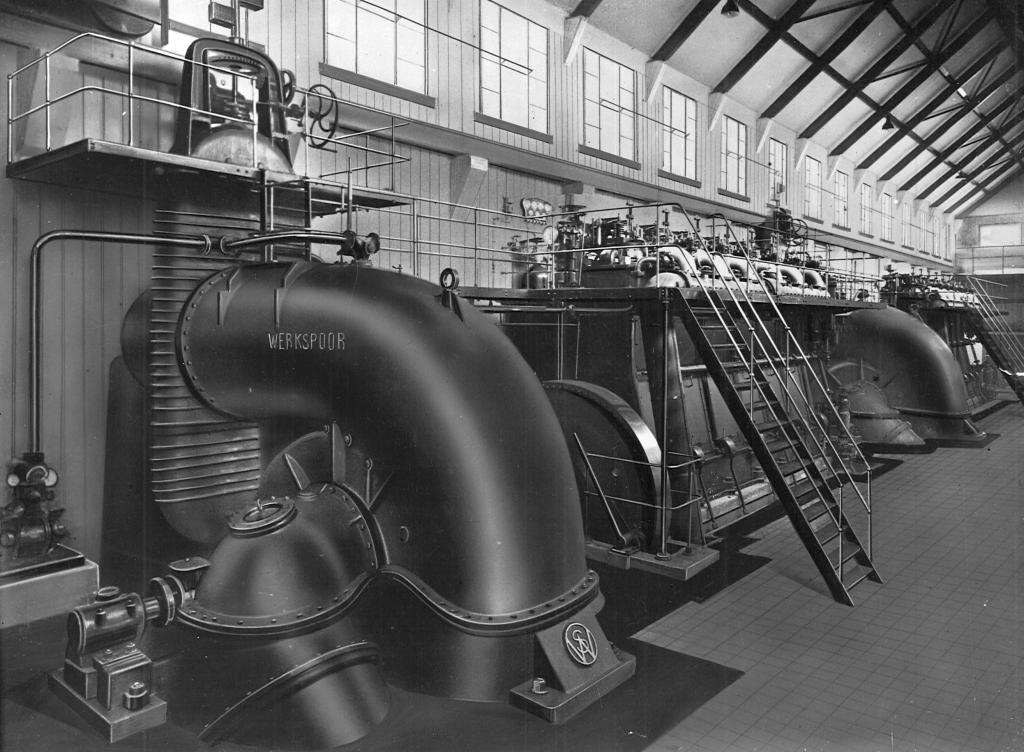
One of the biggest hydraulic problems of the deepwater Wieringermeer is the nuisance of saltwater seepage. This is salt water that lies below the IJsselmeer and is pushed up into the Wieringermeer by the weight of the IJsselmeer water. Because Leemans and Lely both drained into the IJsselmeer, 800,000 tons of salt entered the IJsselmeer every year. Between 1994 and 1997, Leemans was therefore converted into a main pumping station that drains the polder water, salinated by the seepage, into the Wadden Sea. Of course, Leemans also drains all excess water after heavy precipitation. Lely only comes into operation if, for example, there is a threat of flooding.

In addition, the two diesel engines were replaced by four electric motors, each driving a centrifugal pump. Together, they can pump out 1,500 cubic meters of water per minute. Every year, over 150 million cubic meters of water must be pumped out of the polder to keep the Wieringermeer dry. In 2021, the pumping station underwent another major renovation: the concrete work was renovated, the power lines were replaced and all kinds of parts of the grinding system were refurbished. Much appeared to have been affected by the salt water, but Leemans can take on another quarter century, keeping the Wieringermeer dry and fresh every day.
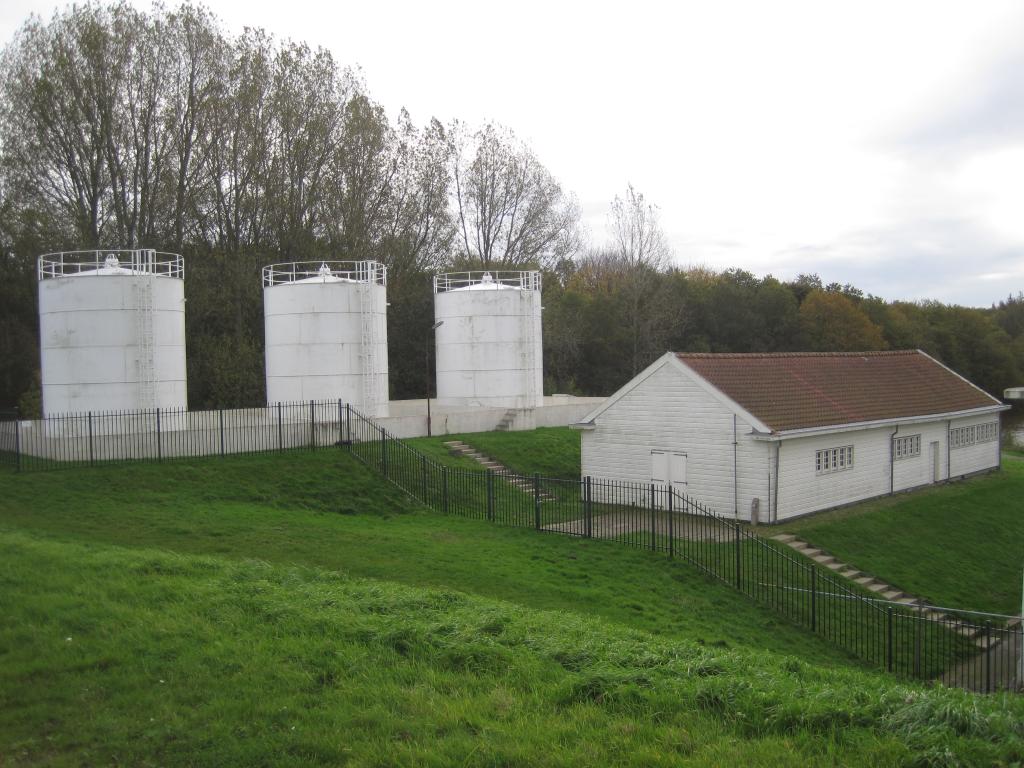
Additional
Pumping Station Leemans is located along several bicycle routes, for example the Medemblik-Workum section of the South Sea Route.
Those who hike the Wieringerrand Route will also pass the pumping station.